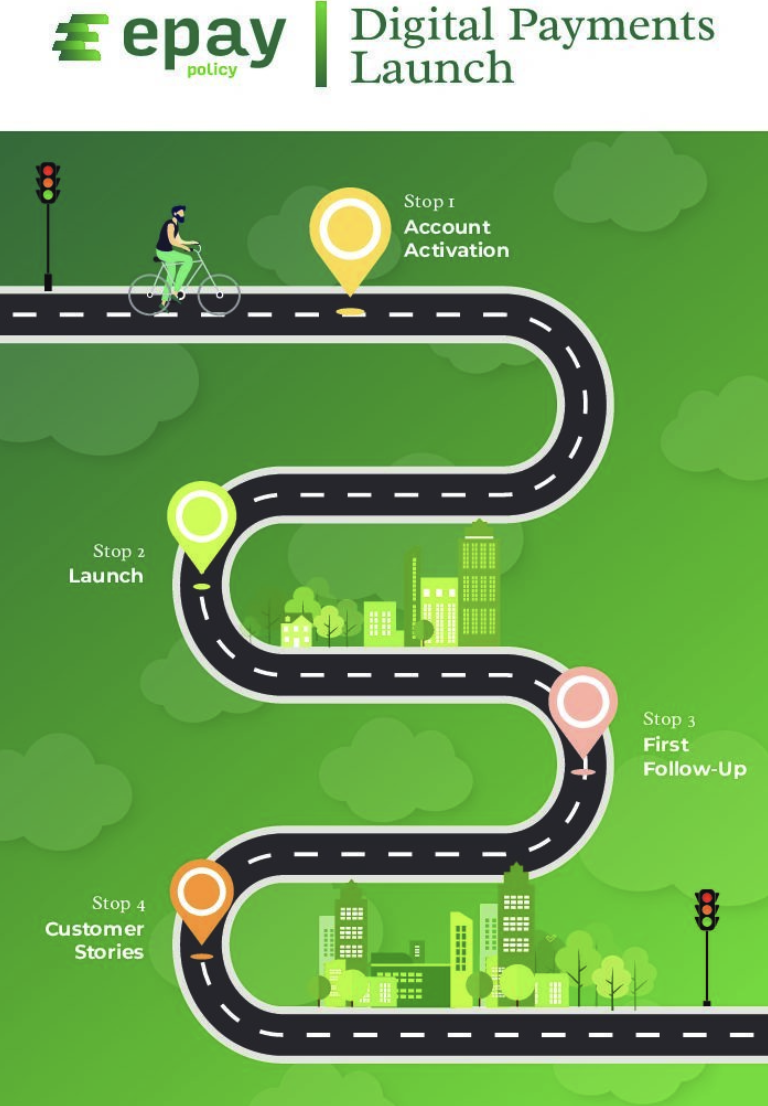Frequently asked questions (and helpful answers).
After many years in the industry, we hear a lot of valid questions. Here are some of the most common questions and answers.
Getting Started
Besides 5 minutes not much. Have your basic account information ready, including which bank accounts you would like your funds deposited. If ready click here to get signed up!
Independent Insurance Agencies, MGA/Wholesalers, Premium Finance Companies, and Insurance Carriers in the United States and Canada.
Yes, ePayPolicy is available to insurance organizations that are sole proprietorships, with supporting documents.
No, with ePayPolicy there is no contract, no signup fee, and you can cancel at any time.
Unfortunately, no. ePayPolicy’s payment processing platform is specifically designed and set up for insurance-related payments.
That depends on your state’s requirements. We recommended checking with your state’s Trusted Choice / BIG I Partner for the most up-to-date regulatory information to ensure your agency stays in compliance.
Using ePayPolicy
We accept all 4 major credit cards. Visa, Mastercard, American Express and Discover.
Processing fees vary by country and/or state, contact support for more information.
Credit card, debit card, and ACH payments will typically take about 2-4 business days to settle to your bank account.
Once you sign up there will be an email sent to you with a link to your online dashboard. From your dashboard you can track all transactions, export them, change user permissions, and check statuses of all transactions. In addition, you and your team will receive an e-receipt for each transaction. You can subscribe and unsubscribe from these notifications per user.
Yes, upon activation your account will be given a set limit per transaction. This limit can easily be increased to accommodate larger payments.
The moment a payment is made, an e-receipt is sent to all parties (the payer and anyone in your organization that subscribes to the e-receipts). The payment is also reflected in the dashboard in real time.
Batches in our dashboard represent daily deposits that are sent to your bank account. Those batches align to the penny with deposits that hit your bank account. Our system creates one batch per day that could include multiple transactions. You can see a breakdown of all of the transactions within a batch by logging into our online dashboard.
Yes, you can find the PayNow buttons and the email signature buttons on our Client Toolkit page. Just pick the button you like best and send that with a link to your web designer. If you need further assistance, we’re happy to help.
To add an email signature button, hyperlink the button of your choice in your email signature setup. See instructions here for Gmail or Outlook.
When a bounced ACH occurs, we notify you and the payer immediately by email. ePayPolicy will debit your account for the funds.
We typically know funds are rejected after 5 or 6 business days from the transaction. This works in the same way as a paper check, where the funds may look good initially but are later pulled back.
You will still be charged the transaction fee on the original transaction. Therefore, if an NSF occurs, you’ll only be charged the transition fee associated with the payment which will vary based on payment amount.
Yes, you can void a credit card or ACH payment from your dashboard. It must be completed before 8 pm of the initial transaction. There are no charges to you or the payer for issuing a void.
You can also refund a credit card transaction between 2 days and one year after the original transaction and can refund an ACH transaction between business 6 days and one year. This is because ACH transactions take longer to fully settle and we want to protect you from issuing a refund until that happens. Using our dashboard, you will be able to make full and partial refunds. There are no additional fees for refunding a payment.
At this time, we can only accept credit card payments in Canada.
Integrations / APIs
Yes, this is done via an API and you can learn more about that here. We also have multiple integration options which are listed here. If you need further assistance, please email us at support@epaypolicy.com and we’ll be happy to work with your team to get integrated.
Once your ePayPolicy account is active, contact our team at 844-372-9300 to review pricing and options.
Most integrations can be completed in 1-2 business days but will vary on the integrated system.
To set up an integration you will need to switch from your basic payment page subscription to an integration payment page subscription, there are no additional setup costs. Pricing for the integrations varies and can be found at the bottom of the integration landing page.
We’ll add at least two unique identifier fields such as an account number and Zip Code. Once that information is entered on the payment page the invoices associated with that account will be accessible.
Yes, you can switch back to a basic payment page for no additional costs but the additional features of the integration will be inactive.
Each integration is different, specific FAQs can be found on their landing page.
Data Security
Yes, ePayPolicy doesn’t store any credit card or ACH information. Once a payment has been made, verified, and processed, we then expunge the client data from our system. We are PCI Level 1 compliant, which is the highest level of compliance within the Payment Card Industry. We go through an annual audit of our systems and processes to ensure we are doing everything possible to keep you and your customers’ information secure at all times.
PCI DSS is a set of universally accepted standards that help protect the safety of customer data. PCI DSS sets the operational and technical requirements for organizations accepting or processing payment transactions, as well as for software developers and manufacturers of the applications and devices used in those transactions.
Put simply, any business entity that is involved in accepting, processing, and storing payment card information is required to comply with PCI DSS.
ePayPolicy is Level 1. This is the highest of four PCI compliance levels, based on the total ($) or transactions made per year. Being Level 1 means we must to follow the strictest data security protocols as defined by PCI DSS.




